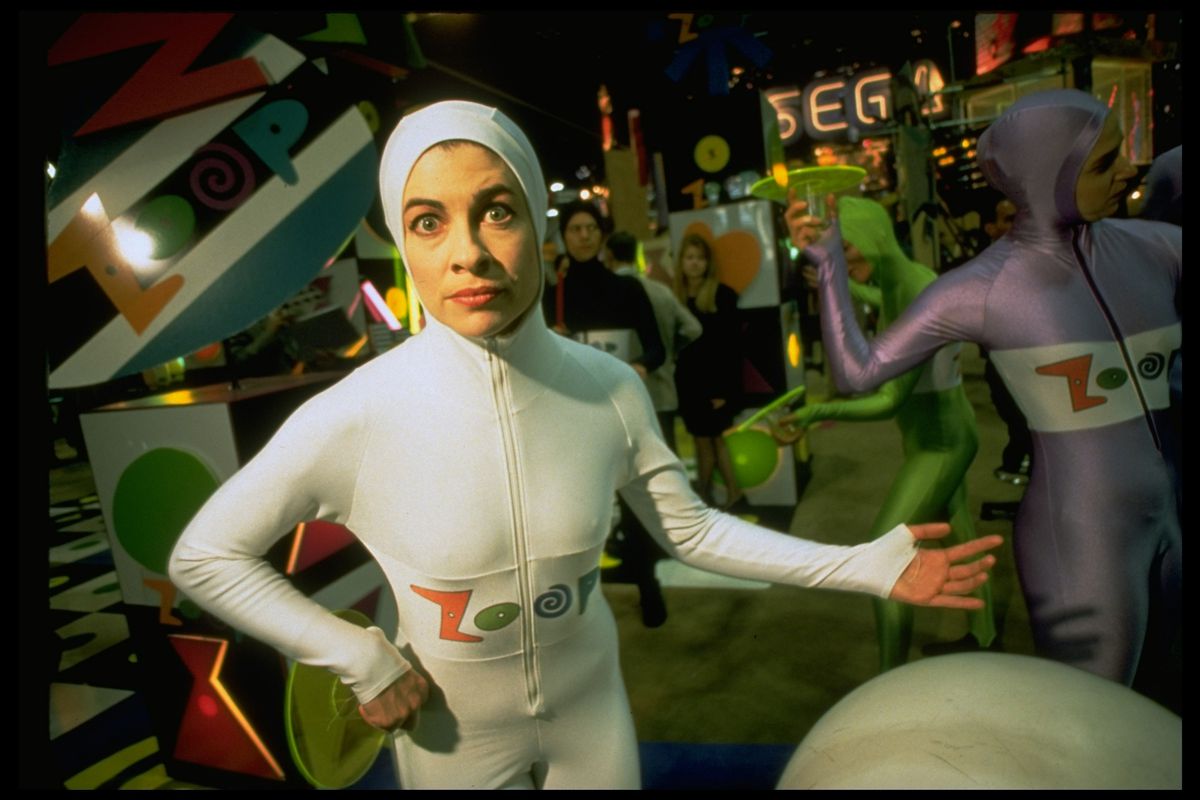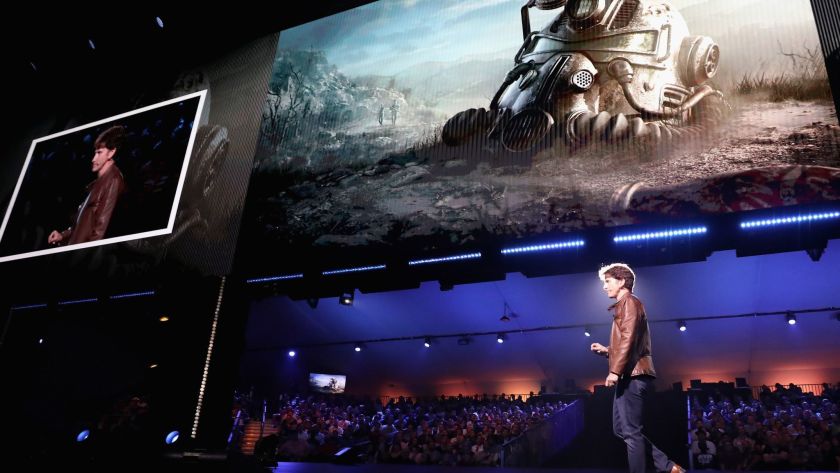A Brief History of E3 Expo – What’s It All About?
In case you’ve been wondering, E3 stands for Electronic Entertainment Expo and is a video game industry conference held yearly in Los Angeles.
Game developers, publishers and gaming industry giants gather annually for the E3 Expo. Each displays their biggest and most hotly anticipated projects to the world. The exhibition comprises scores of individual publishers and studios, usually grouped into their respective events. Each day there are new events showcasing games, updates and announcements from each host.
As data-miners, leakers and industry veterans chime in with their findings, reports and thoughts, the speculation fuels intrigue for potential announcements. With rumours and predictions rife ahead of the event, the build-up for gamers is tense.
Gaming is an exciting industry. The expo is an official space for enthusiasts and professionals to share their passion and participate in the latest announcements and releases across the globe–it’s one of the biggest and most important gaming exhibitions of the year.
E3 Through the Years
The E3 Expo is also one of the oldest gaming exhibitions, with the inaugural event taking place in 1995. In the succeeding 26 years, it has become one of the biggest gaming events of the year. It’s a huge part of video game culture and is considered a momentous event for many gamers.
If there are whispers of a new AAA game to be released from a big studio, then E3 is the place to expect it confirmed. It’s a show where both big and small developers come together to showcase what they’ve been working on, ready to update the masses with news on their latest creations.
But it does have its low moments. Over the years, there have been several botched presentations and reports of confusing schedules. But these minor hiccups don’t detract from the expo’s impact within the industry. Over the course of E3’s life, it has managed to continually hold its title as one of the biggest events in the video gaming calendar.
1995 – 2002
The 90s saw the video game industry still struggling to be taken seriously as a professional sector. Tom Kalinske, CEO of Sega America between 1990-1996, noted how poorly gaming was viewed in its infancy.
“Back in the early 1990s we always used to show at [Consumer Electronics Show] in Las Vegas,” he said.
“We were there alongside the guys that were showing their new automotive speakers, or their new computing systems, or TVs, or telephones… In 1991 they put us in a tent, and you had to walk past all the porn vendors to find us, to find Nintendo and ourselves and the third party licensees.” He concluded that it was raining hard that year, and they watched as their Sega Mega Drives got soaked through a leak in the roof.

Video games were essentially categorised as toys in the early 90s, partly the fault of Nintendo’s marketing. Adverts were specifically aimed at young children, seating video games firmly in the toy category.
Admittedly, Mortal Kombat appealed to an older audience, especially after its movie in 1995. Unfortunately, this huge dissonance between a child-friendly game and a violent punch-up pushed the scale to the other end, with issues about blood and violence called into question.
It wasn’t until the launch of the Interactive Digital Software Association–now known as Entertainment Software Association (ESA)–that games were better represented and standardised. This gave the entire industry a little more credit as a professional body.
The first E3 in 1995 was a massive success with over 40,000 people attending the physical event. The console wars had already begun by this point, and everyone wanted extra publicity.
Game presentation became the biggest factor in new development, and the likes of Resident Evil and Tomb Raider blazed a trail for other genres with more clear-cut storytelling and visuals.
From around 1995 onwards, gaming entered its modern era with visual masterpieces and new games and systems being announced more frequently.
2002 – 2009
By 2002, the main platforms were Nintendo, Microsoft, and Sony. They would be at the forefront of the next eight E3s. Yet in recent years, gaming giants Sony withdrew from the event–with bosses instead choosing to promote the brand’s new releases independently.
The hype for the expo grew astronomically in 2005 with over 70,000 attendees, television coverage and two big announcements: the PlayStation 3 and Xbox 360 would hit the market.
From then on, sadly, it was a bit of a downhill slope for E3 as the ESA decided it was too difficult to reach target audiences. The decision to scale down E3 was made because of the incomparable increase in gaming media, and the difficulty of providing a large enough expo to accommodate the growing landscape.
The decision was made to rebrand the event ‘E3 Media & Business Summit’. Attendance was limited to 10,000, and media coverage dipped noticeably. It had shifted toward being a strictly corporate event, attended by industry professionals only. The ESA discovered the problem and realised that the media, enthusiasts and bloggers were the drive for E3’s popularity and function.
2009 – 2018
In 2009 there was another rebrand from the ESA official. The E3 Media and Business Summit once again reverted to just good old E3. Attendance grew to 41,000 people again, and the very next year AAA developers reignited their interest. Big releases were announced through the E3 event by the big three platformers, but smaller developers also got involved. This was the moment that EA, Ubisoft, and Konami gained a little more traction and reputation.
The public was first allowed into the E3 event in 2017. Fans could watch discussion boards, speak to company reps and play game samples. The expo’s popularity grew as online streaming and live content became more widely available, while those who couldn’t attend physically could still get involved online.
The ESA found themselves with the same problem, though. The growth of E3 meant that it was harder to reach targeted audiences with so much competition all in one place. Nintendo first departed E3 with their Nintendo Direct showcase. EA then followed suit with EA Play. These events were hosted separately to E3. And of course, Sony’s exit in 2019.
Microsoft and Bethesda made use of their increase in coverage over the latter of these years as they showed off indie developers during their line-up.

A clear example of E3’s drawbacks, however, was how some upcoming releases were unjustifiably overhyped. At E3 2018 the game Anthem was highly anticipated, and announcements hinted at a breakthrough gaming experience. But when the game was released it failed to meet those expectations. Since then, developers have been careful not to overstep the truth in E3 showcases.
2019 and the Future of E3
By 2019, E3 was the gaming industry’s most reviled event, only halted in its physical format in 2020 due to the global pandemic.
Now, the E3 show already has an announced list of hosted events that include Nintendo Direct, Microsoft & Bethesda, The PC Gaming Show, The Guerrilla Collective, and Wholesome Direct. The list goes on and each segment is set to announce both AAA and indie games.
In its 2021 virtual format, E3 seems to have found a path to staying relevant. By acting as a hub and a date for all of these developers and studios to aim for, E3 has become more of an idea than an actual event.
Self-made developers and smaller studios can utilise livestream platforms like Twitch and YouTube without needing a conference like E3 to reach their audience. In its new digital form, E3 still attracts a huge amount of attention, so it may well stick around for many years to come.

